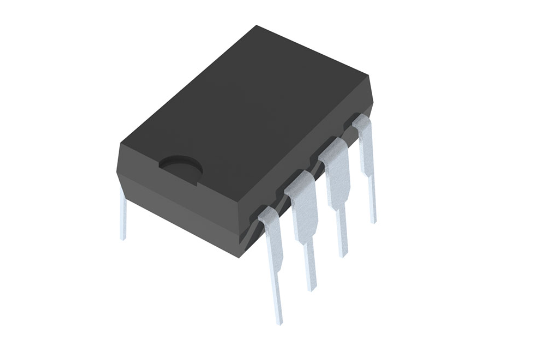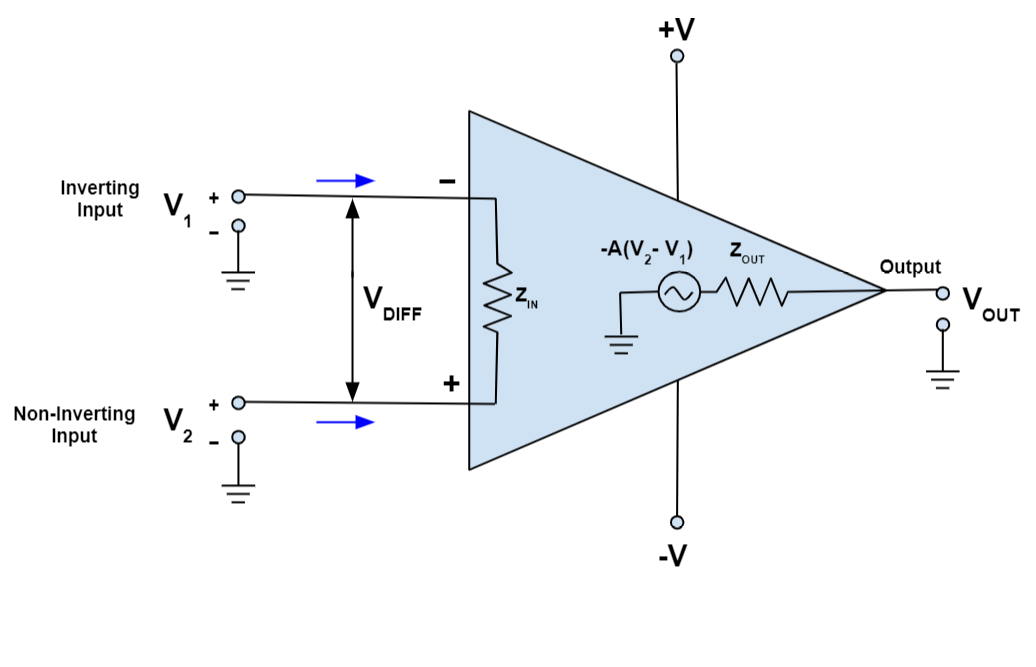How Operational Amplifiers Work
Definition and Basic Concepts
Operational amplifiers, commonly known as op-amps, are vital components in analog electronics, widely used for their ability to amplify voltage signals. Defined by their high input impedance and low output impedance, op-amps are designed to perform mathematical operations on electrical signals, hence the name "operational." With two input terminals—the inverting (-) and non-inverting (+)—and a single output terminal, op amplifiers can execute various functions such as amplification, filtering, integration, and differentiation.
Their flexibility and high gain make them essential in applications ranging from audio processing to sensor interfacing. Op-amps are typically used in closed-loop configurations, where feedback is applied from the output to one of the inputs, allowing for precise control of the output and making them incredibly versatile in circuit design.
Classification of Operational Amplifiers
Op-amps can be classified into several categories based on their performance, power consumption, and specific applications:
High-Performance Op-Amps: These are designed for precision applications that require low noise and low offset voltage. They are commonly used in instrumentation, medical devices, and audio applications where accuracy is paramount.
Low-Power Op-Amps: Optimized for battery-operated devices, low-power op-amps consume minimal energy while maintaining adequate performance. They are commonly found in portable electronics and wearable devices.
Industrial Op-Amps: Built to withstand harsh environments, industrial-grade op-amps offer high reliability and durability, making them suitable for automation and control systems in factories.
Rail-to-Rail Op-Amps: These op-amps can output voltages that span the entire range of the power supply, maximizing the dynamic range. This feature is particularly beneficial in low-voltage applications where maximizing output swing is critical.
Programmable Gain Amplifiers (PGAs): These specialized op-amps allow the gain to be adjusted through digital control, making them suitable for applications that require dynamic adjustment of signal levels.
Op Amplifiers Working Principles
The operation of an op-amp is based on the principle of differential amplification. The output voltage is proportional to the difference between the voltages at the two input terminals:
where A represents the open-loop gain, which can be extremely high—often exceeding 100,000. This high gain makes op-amps sensitive to small voltage differences, allowing for accurate amplification.
In practical applications, op-amps are configured in closed-loop arrangements, utilizing feedback to stabilize the gain and improve linearity. Common configurations include:
Inverting Amplifier: In this setup, the input signal is applied to the inverting terminal, and the output is 180 degrees out of phase with the input, allowing for signal inversion and amplification.
Non-Inverting Amplifier: Here, the input signal is applied to the non-inverting terminal, and the output is in phase with the input, providing a straightforward amplification method.
Voltage Follower (Buffer): This configuration provides unity gain and high input impedance, serving as an interface between high-impedance sources and low-impedance loads without loading the source.
Op Amplifiers Application Scenarios
Op-amps are used in a wide array of applications across various industries:
Audio Processing: In audio equipment, op-amps are crucial for amplifying audio signals, performing equalization, and mixing multiple audio sources. Their low distortion characteristics are essential for high-fidelity sound reproduction.
Signal Conditioning: Op-amps play a key role in signal conditioning circuits, where they amplify, filter, or convert signals from sensors before further processing. This ensures that the signals are in the right range and format for subsequent stages in a system.
Sensor Interfaces: In applications involving sensors, such as temperature or pressure sensors, op-amps are used to amplify the weak signals generated by the sensors, making them suitable for further analysis and control.
Control Systems: Op-amps are integral to control loops in industrial automation, processing feedback signals to regulate motors, actuators, and other systems effectively.
Data Acquisition Systems: In systems that collect data from multiple sensors, op-amps help to amplify and condition these signals, ensuring accurate readings that can be digitized and processed.
Op Amplifiers Selection Guide
When choosing an op-amp for a specific application, several important factors should be considered:
Gain Requirements: Assess the necessary gain for your application. Different op-amps offer varying gain characteristics and configurations to suit different needs.
Bandwidth: Ensure the op-amp can handle the required frequency range without distortion. The bandwidth of the op-amp should be sufficient to accommodate the signals you are working with.
Power Supply Voltage: Consider the power supply requirements and ensure compatibility with your circuit. Some op-amps are designed for single-supply operation, while others require dual supplies.
Input and Output Impedance: Choose an op-amp with suitable input and output impedances to match your application, as this can significantly affect signal integrity.
Temperature Range: For industrial applications, ensure the selected op-amp can operate effectively within the expected temperature range, as temperature fluctuations can affect performance.
For a diverse range of high-quality op-amps, Unikeyic Electronics provides options from reputable brands such as Texas Instruments, Analog Devices, and New Japan Radio. These manufacturers are known for their reliability and innovation in the field of operational amplifiers.
Op Amplifiers Market Trends
The market for operational amplifiers is evolving rapidly, driven by technological advancements and changing consumer demands. Some key trends include:
Increased Demand for Low-Power Devices: As portable electronics and IoT devices become more prevalent, the demand for low-power op-amps continues to rise, prompting manufacturers to focus on energy-efficient designs.
Growth in Automation: The expansion of industrial automation is driving the need for robust op-amps in control systems, with a growing emphasis on reliability and performance in harsh environments.
Integration with Digital Technology: The trend towards hybrid solutions is integrating op-amps with microcontrollers and digital signal processors (DSPs), enhancing their functionality and adaptability in modern electronics.
Focus on Miniaturization: As electronic devices become smaller, the demand for compact op-amps that do not compromise on performance is increasing, leading to innovations in packaging and design.
Op Amplifiers Technical Comparison
When comparing different types of operational amplifiers, it's essential to consider their advantages and disadvantages:
High-Performance Op-Amps: These offer exceptional precision and low noise but may come at a higher cost and consume more power than basic models.
Low-Power Op-Amps: Ideal for battery-operated applications, they sacrifice some performance metrics but provide significant energy savings.
Industrial Op-Amps: Built for durability, these are reliable in harsh environments but may be more expensive due to their enhanced robustness.
Rail-to-Rail Op-Amps: While they maximize output range, they can sometimes introduce distortion at the extremes of their output capabilities.
Programmable Gain Amplifiers: These offer versatility with adjustable gain, making them suitable for applications that require dynamic signal handling, although they may be more complex to implement.
Op Amplifiers Latest Technological Advances
Recent advancements in operational amplifier technology are shaping the landscape of electronics:
Integrated Circuit Technologies: Modern op-amps often come as integrated circuits (ICs), which reduces size, enhances performance, and simplifies circuit design.
Adaptive Gain Control: Innovations in automatic gain control allow op-amps to dynamically adjust their gain based on input signal levels, increasing flexibility in applications where signal levels vary widely.
Enhanced Noise Performance: New designs focus on reducing noise, which is crucial for applications in sensitive environments, such as medical and audio processing.
Integration with Digital Processing: The development of op-amps that can work seamlessly with digital signal processors (DSPs) is allowing for more sophisticated signal processing capabilities, enhancing overall system performance.
Op Amplifiers Common Questions
1、What is the primary function of an operational amplifier?
The primary function of an op-amp is to amplify voltage signals, facilitating various analog signal processing applications.
2、How do I choose the right op-amp for my application?
Consider factors such as gain requirements, bandwidth, power supply voltage, and specific application needs when selecting an op-amp.
3、Can I use an op-amp in a digital circuit?
While op-amps are primarily analog devices, they can interface with digital circuits, especially in mixed-signal applications.
4、What are the common configurations of op-amps?
Common configurations include inverting, non-inverting, and voltage follower setups, each serving different circuit requirements.
5、Are there specific op-amps for low-power applications?
Yes, there are specialized low-power op-amps designed to operate efficiently in battery-powered devices.
6、Where can I find high-quality operational amplifiers?
For reliable and diverse options, Unikeyic Electronics offers a wide selection of operational amplifiers from trusted brands like Texas Instruments, Analog Devices, and New Japan Radio.
By understanding how operational amplifiers work and their wide-ranging applications, engineers can leverage their capabilities to enhance the performance of electronic systems. Whether in audio processing, signal conditioning, or industrial control systems, op-amps remain a cornerstone of modern electronics, driving innovation and efficiency across various sectors.




